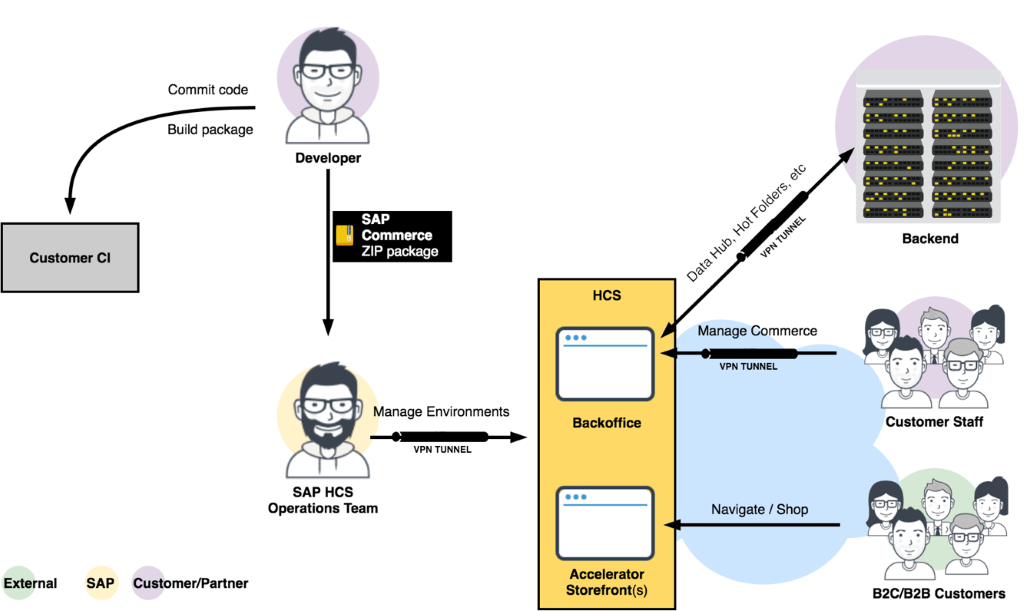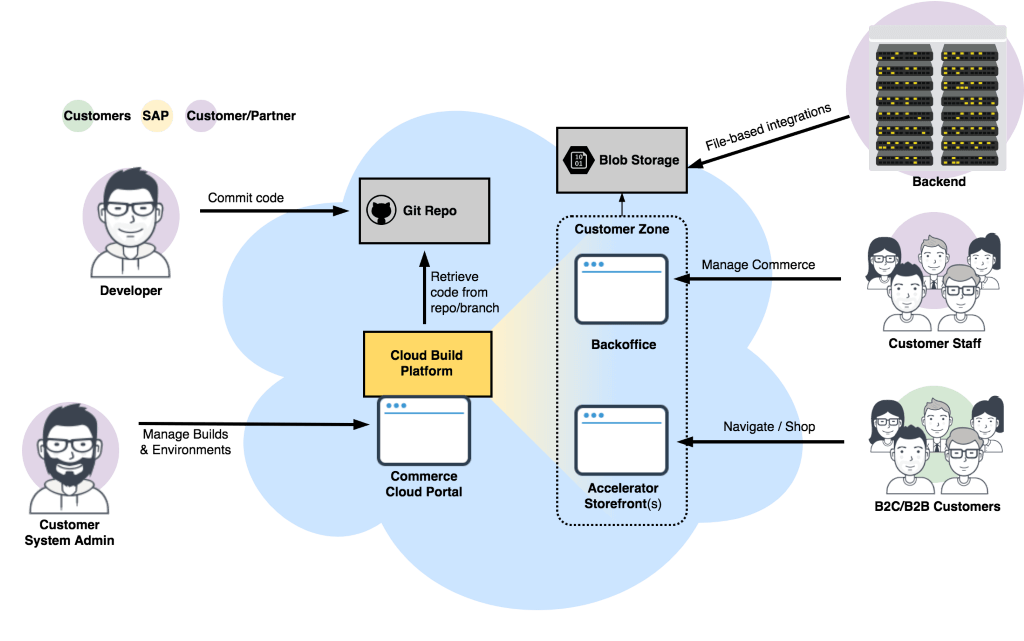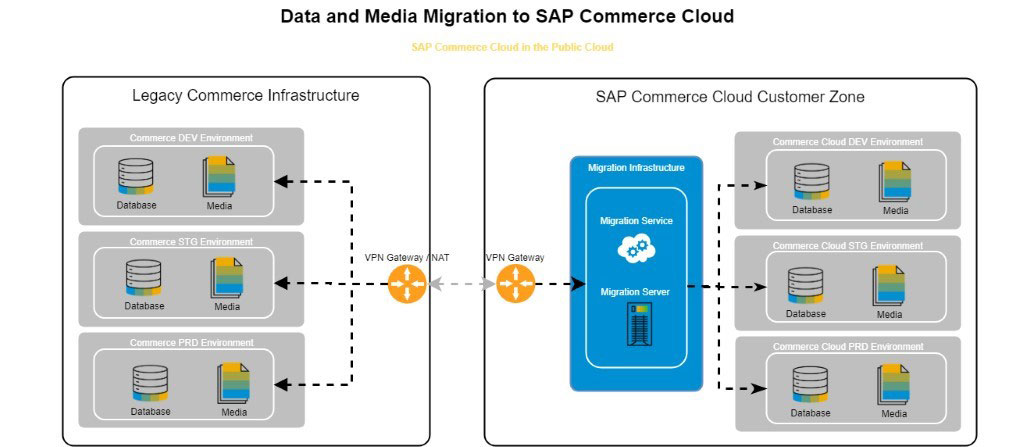CCv1 vs. CCv2
Apart from the name and the fact that both are cloud solutions, there are not many similarities between the versions. With CCv1 SAP offered a non-on-premise solution, tied to SAPs infrastructure. Now CCv2 is announced as Commerce Cloud on public infrastructure. At the moment only Microsoft Azure is supported but this will be expanded to other providers like Google and AWS in future.
The main point of CCv2 is self-management. As customer you no longer depend on SAPs Cloud Service Operations Team. We can handle provisioning, package building, deployments and maintenance on our own through the SAP Commerce Cloud Portal. In the next section we will delve into this point.
Reasons for change
Who better argues than SAP with this statement?
“SAP Commerce Cloud [Version 2] takes away many of the pain points of managing the infrastructure, so that you can focus on developing a custom-tailored commerce solution that fits your business needs.”
Let’s break down the business statement.
You may wonder why “managing the infrastructure” is a pain point in a non-on-premise solution like CCv1. The reason is that every change needs to be requested via form. Then it is processed manually without automation by SAPs Operations Team which implies waiting times, long-term planning and patience. For example, deployments have to be announced at least 24 hours before. Now you are totally free to deploy whenever you wish to deploy. The same applies to taking and restoring snapshots. On top of that Zero Downtime Deployments are possible, which means your shop is online all the time.
Furthermore, you no longer have to agonize over the system setup and security. CCv2 comes with a pre-defined best-practice cluster setup and auto-scaling features based on statically determined metrics. Great for special dates like Black Friday.
We all hope that it never occurs, but in case of an infrastructure breakdown you’ll happy to hear that SAP also made a step forward. The disaster recovery process is automated and therefore accelerated and less error-prone.
In general, when you decide for CCv2 you are sure to be future proof because SAPs strategic direction. You will be provided with the latest patches and quarterly feature updates. You can profit by the enhanced commerce extensibility and integration possibilities. And SAP offers a Pay-as-you-grow subscription model. Here you can find further service descriptions.
Challenges
Enough of praise – let’s talk about obstacle. Every change requires some effort. A migration of an existing shop is no exception.
Our first one was upgrading to a compatible version. At least it must be version 6.7, but this can’t be recommended because it is out of mainstream maintenance since August 2020.
When you don’t want to start from scratch again, the next big step will be the data and media migration. Even though SAP offers migration tools that assist you, there are some challenges to overcome. The supported CCv2 database uses case-insensitive collation. Imagine the trouble with duplicates coming from a case-sensitive collation database.
Furthermore, we checked that all third-party systems like SSO, Payment providers, Google Merchant etc. keep on working in the new setup. We integrated a SMTP relay server because in CCv2 it’s no longer included like in CCv1 before.
And we made preparations to prevent order number range conflicts in the ERP system during the coexistence of CCv1 and CCv2 environments.
There are concerns not affected us but worth mentioning: Consider migrating Synchronous Order Management to Asynchronous because it won’t be supported after November 2021. Do not blindly pass “Go”, when you have a customized build process or when you replaced a standard ecosystem component, e.g. Solr with Elasticsearch. Keep an eye on special data protection laws and regulations that may require a specific datacenter region.
Conclusion
We can give a positive feedback on CCv2’s self service concept and the smoothly data and media migration. The intuitive user interface and the powerful toolset, which is continuously extended, impressed us. The included logging and monitoring management with Kibana and Dynatrace are state of the art and has a lot of capabilities. Now we release commerce functionality with greater speed and frequency due to the effortless deployment process while automatically getting the latest patch version and feature updates.
Curious about your potential with SAPs Commerce Cloud Version 2? Get in touch with us!



